Results 2,041 to 2,050 of 12089
Thread: Anandtech News
-
06-20-12, 01:30 PM #2041
Anandtech: Microsoft Announces First Windows Phone 8 Hardware Partners, Qualcomm SoCs
Probably one of the biggest rumors leading up to the Windows Phone 8 announcement was some speculation that Qualcomm would lose its exclusive status as the sole SoC vendor for Windows Phone handsets. As a recap, WP7 and WP7.5 started out with QSD8x50 65nm Snapdragon, and later moved on to 45nm single core MSM8x55 and MSM7x30.
Today, Microsoft announced that Qualcomm will be the sole provider of dual core SoCs for initial launch devices from hardware partners Nokia, Huawei, Samsung, and HTC. There's some wiggle room in there for what comes after that first phase, but for now Qualcomm still holds that exclusive spot.
More...
-
06-20-12, 01:30 PM #2042
Anandtech: Existing Windows Phone 7 devices will get updated to Windows Phone 7.8, no
Looks like some of the earlier rumors about the upgrade path for existing WP7 devices turned out to be true. Microsoft just now announced that existing WP7 devices will not get updated to WP8, instead they'll get WP7.8 and a partial update feature set, including the new home screen with customizable live tiles.
We're still waiting to get more details about what other features make it over. Applications made for WP7 and WP8 will continue to work on WP7.8, but users wanting all the rest of the WP8 features will have to get that update in the form of new hardware.
More...
-
06-20-12, 03:30 PM #2043
Anandtech: New Windows Start Screen Demoed on Lumia 900 running Windows Phone 7.8
We just caught up with Greg Sullivan, senior product manager for Windows Phone, who was showing off a Lumia 900 running a non-final Windows Phone 7.8 build. The WP7.8 build brings the new WP8 home start screen to existing WP7.5 devices, and possibly some other unannounced features depending on the device. Microsoft is being relatively tight-lipped with any of the other details about features that might be coming with WP7.8.
Anyhow, the new WP7.8/WP8 home screen replaces the previous single wide and double wide tiles with a more dynamic resize option. There are now three sizes, the single wide, double wide, and a much smaller square shortcut. Long pressing brings up the familiar hover and rearrange menu, and tapping on the resize button cycles through available tile sizes. It's shocking how much more dynamic having the smaller tile size makes the start screen appear.
More...
-
06-21-12, 06:00 AM #2044
Anandtech: Samsung's Galaxy S 3 US Marketing Focuses On Features
The news of the day may be all Windows Phone, but that didn’t stop Samsung from having a launch event for the US Samsung Galaxy S 3. If you haven’t read our review, head on over there for a great look at what Samsung’s new flagship looks like in the US. Today’s event was designed primarily to discuss some new features that are premiering with the Galaxy S 3 and that may show up in some earlier devices. And at today’s event, the name of the game was sharing.
Brian covered most of these, so we won't spend too long fleshing them out. As interesting as these features are, what really struck me about today's event was the tone this establishes for Samsung's US marketing campaign. But first, let's dig into the features a bit.
AllShare branding has shown up in several different TouchWiz iterations, and up until now has leveraged the features of the DLNA spec to offer media sharing services. The latest iteration includes AllShare Play which is a DLNA screen sharing feature that mirrors AirPlay, and works with DLNA capable displays on the same network as the source. The new sharing features take advantage of WiFi Direct to enable specific sharing use cases.
AllShare Group Cast was mentioned in the review and is a collaboration tool for meetings where you don’t necessarily need to look at each other. A host user enables Group Cast from their device and creates a PIN so other users can access the session. A document open on the host device can be shared on the other devices and users can annotate the shared document, or simply view the document at their leisure. This feature obviates the need for a large shared display or “smart screen” for group collaboration. For office types this could be a great tool for pick-up meetings and ad hoc collaboration amongst a group of users. The rep demonstrating the feature wasn’t aware of any user maximum, though sharing a document with hundreds of users could get a little ungainly. Users must be within about 200 feet of the host device; and, indeed, the demo was perfectly stable from about 100 feet away, even in the spectrum crowded confines of a NYC tech event space.
ShareShot is born from the preponderance of the public who now reach first for their smartphone when taking pictures at a party or other event. Like Group Cast, a user opens up a ShareShot session which is viewable by other devices. Once activated on the devices, photos taken by the users are distributed via WiFi Direct with all of the users in the session. This really is perfect a wedding or similar event, where eschewing social network photo sharing could create a more intimate experience.
When you don’t want to share with more than just one person, there’s S Beam. Brian mentioned the effectiveness of S Beam to provide quick point to point transfer of files over WiFi Direct using NFC to simplify the set-up. This supplants the Android Beam which used NFC for the data transmission component, and is a much slower experience.
PopUp Play was a feature that, though neat, fell between stools with regards to the event's “sharing” theme. The feature provides access to your video content while within other applications. So, if a text message comes in while watching a video, it can be replied to without interrupting playback. The video content becomes a floating panel above the app. Playback was smooth and the transition wasn’t terribly jarring. Like the Mini Apps in the tablet TouchWiz generation, the video overlay can be moved around the screen and since it is at the OS level is app agnostic. On a smaller device the feature might crowd the app upon which it’s overlaid and create usability issues, but with 4.8” to work with you'll be able to livetweet Call Me, Maybe without switching apps.
This launch event was as much about plugging the device as plugging the marketing push that Samsung is preparing for the Galaxy S 3. Like the Galaxy Note and Galaxy S II ads that preceded it, this marketing campaign will be a little cheeky in its derision for Apple and its diehards. Fair or not, the campaign sports a personality that can be appreciated when taken with a grain or two of salt. What’s clear from the marketing, though, is that Samsung doesn’t see their competition as the rest of the Android market. Apple’s iPhone is their target, and with a commanding marketshare there’s good reason for them to act like the Android front-runner.
And so, Samsung is focusing on what the iPhone doesn’t do, and that’s why we’re talking about the various sharing capabilities and not S Voice or pure hardware performance. Like the PC space before it, once hardware parity has been achieved (or as much as necessary for a mass consumer device) then features become the marketing linchpin. A strong component of this marketing will focus on NFC, including kiosks and posters that distribute exclusive content to Galaxy S 3 users. The kiosks serve to highlight not just the NFC features of the device, but the extensibility of the TecTile NFC tags that they’ll be selling alongside the phones at carrier stores.
And then there’s the 3D Interactive Experience. One feature briefly mentioned in the review are the various gestures that can be used through the front facing camera to control the phone. The most highlighted one is the ability to take a screen capture by simply waving your hand across the device. User and gesture recognition through cameras has become a fairly common way to draw attention to a device, and though battery life might be a concern, I can envision some gesture based controls to be pretty handy; even more so than voice control. This is the same technology behind their SmartStay feature which keeps the screen on so long as the user’s eyes remain on the display. The 3D Interactive Experience takes things to a bigger scale.
Movie goers at 3D theaters throughout the country will be treated to an interactive game that supposes to leverage the motion tracking features of two Galaxy S 3 devices. Ostensibly, the game tracks the hand motions of audiences to control a paddle in a simple game reminiscent of the early Kinect demos. Reps at the event were coy about whether the sequence is actually just a plain old non-interactive demo, but insisted that this sort of motion control was perfectly within the reach of the Galaxy S 3. If the devices are so capable, then we’re left to wonder whether the feature will be made accessible to 3rd party devs for integration into games or other applications.
Samsung is reporting that this will be their largest marketing campaign in the US ever, and for a device that has already broken new ground by being the first Android device launched on the big four major carriers unblemished by bespoke bodies, ridiculous names or feature restrictions. Even without a marketing blitz, the Galaxy S 3 has inspired a lot of excitement amongst tech savvy consumers. But it takes more than our readers to become the top selling smartphone.
More...
-
06-21-12, 11:30 PM #2045
Anandtech: AMD Radeon HD 7970 GHz Edition Review: Battling For The Performance Crown
The GeForce GTX 680 launch marked both the closest and the farthest AMD has ever been from outright beating NVIDIA in modern times. On the one hand NVIDIA beat them by more than usual by achieving the holy trifecta as opposed to focusing just on performance. And yet on the other hand when it comes to raw performance AMD has never been this close. Where the GTX 580 beat the 6970 by 15% the GTX 680 led by just 10%, and even then it lost to the 7970 on some games. With such a close gap an obvious question arises: maybe, just maybe AMD could meet or beat NVIDIA with a higher clocked 7970 and rival them for the performance crown?
Today AMD is putting that idea to the test with the launch of the Radeon HD 7970 GHz Edition. Although AMD is not calling the 7970 GHz Edition a response to the GTX 680 – instead choosing to focus on it being Tahiti’s 6 month birthday – for all intents and purposes this is AMD’s response to the GTX 680. A higher clocked 7970 with AMD’s take on GPU turbo intended to make a run at the GTX 680 and that performance crown. So how does AMD fare? As we’ll see, after today it will no longer be clear who holds the performance crown.
More...
-
06-22-12, 11:30 PM #2046
Anandtech: Amped Wireless R20000G, SR20000G, and UA2000: Routers, Repeaters, and Adap
A couple months back, we were contacted by Amped Wireless and offered a chance to look at their latest dual-band 802.11n router, the R20000G. Along with the router, Amped also sent their updated dual-band directional wireless adapter, the UA2000. Instead of your typical omnidirectional antenna, the UA2000 promises increased range and throughput when pointed at your wireless router/access point. Rounding out the review, Amped sent a third product, their SR20000G repeater, which is basically the same as the router but with tweaked firmware and software so that it can extend the range of your wireless network(s).
While there are many wireless routers on the market, there aren’t nearly as many repeaters, and a quick search through Newegg only turned up one other directional wireless USB: Amped’s previous generation UA1000. That certainly piqued our interest, but Amped is also promising better coverage and signal quality thanks to the use of higher power 600mW antennas. Higher power isn’t the only improvement, as Amped also uses higher gain antennas; the former improves the range of your signal (how loud the router “shouts”) while the latter improves the reception, particularly of weaker signals (how well the router can “hear”). Can the router, repeater, and adapter deliver on the promise of better quality wireless networking, with improved range and transfer rates? That’s what we aim to find out.
More...
-
06-23-12, 03:30 AM #2047
Anandtech: The next-gen MacBook Pro with Retina Display Review
Apple makes the bulk of its revenue from devices that don’t look like traditional personal computers. For the past couple of years I’ve been worried that it would wake up and decide the traditional Mac is a burden, and it should instead be in the business of strictly selling consumer devices. With its announcements two weeks ago in San Francisco, I can happily say that my fears haven’t come true. At least not yet.
It’s been a while since Apple did a really exciting MacBook Pro launch. Much to my surprise, even the move to Sandy Bridge, the first quad-core in a MacBook Pro, was done without even whispers of a press conference. Apple threw up the new products on its online store, shipped inventory to its retail outlets, updated the website and called it a day. Every iPhone and iPad announcement however was accompanied with much fanfare. The MacBook Pro seemed almost forgotten.
With its WWDC unveil however Apple took something that it had resigned to unexciting, dare I say uncool status, and made a huge deal about it. Two weeks ago Apple did the expected and offered relatively modest upgrades to all of its portable Macs, all while introducing something bold.
Apple calls it the MacBook Pro with Retina Display. You’ll see me refer to it as the next-gen MacBook Pro, Retina MacBook Pro, rMBP or some other permutation of these words.
After using it for the past two weeks I can honestly say it’s the best Mac Apple has ever built. And there’s a lot more to it than hardware.
Read on for our full review!
More...
-
06-25-12, 02:31 AM #2048
Anandtech: ASUS Transformer Pad Infinity (TF700T) Review
Since the release of the first Eee Pad Transformer (can you believe it's only been about a year?), ASUS has released several members of the Eee Pad and Transformer families. We got a slider, a thinner version called the Transformer Prime, as well as a refreshed entry level Transformer Pad 300. ASUS' experimentation and learning will pay off later this year as it ships the first Windows RT/8 versions. Until then however ASUS isn't done iterating. Today it's officially announcing the final configuration of the Transformer Pad Infinity, the first member of the TF series with a 1920 x 1200 display. It also happens to be the first tablet we've tested to use NVIDIA's higher binned Tegra 3 T33 SoC.Read on for our full review!
More...
-
06-25-12, 12:00 PM #2049
Anandtech: OWC Releases 960GB Mercury Electra MAX 3G SSD
OWC has released a 960GB version of their Mercury Electra 3G SSD series. The drive uses two SandForce SF-2181 controllers, configured in RAID 0 using Silicon Image's RAID controller. There is actually 1024GiB of NAND flash on the board, 512GiB per controller, but as is usual with SF-2281 64GiB in total is dedicated to RAISE and another 71GB is for spare area. Here are the full specs.
OWC has not published any random read/write figures so analyzing performance at this point is rather difficult. Basically, we are looking at two SandForce SSDs in RAID 0 but throughput is handicapped by the SATA 3Gb/s interface. OWC told us that there are some architectural limitations which is why the drive uses SATA 3Gb/s instead of 6Gb/s.OWC Mercury Electra MAX 3G (960GB) Specifications Raw NAND Capacity 1024GiB Formatted Capacity 894GiB NAND 2Xnm Asynchronous MLC NAND Controller 2x SandForce SF-2181 RAID Controller Silicon Image SteelVine Sil5923CNU Sequential Read 254MB/s Sequential Write 250MB/s Price $1,270
If you have been following the SSD market, you have probably noticed that 2.5" consumer SSDs top out at 512GB. The only other 1TB SSD is OCZ's Octane, but unfortunately we don't know what OCZ has done to achieve such capacity (and I couldn't even find a single review of the 1TB model). Once Intel's 128Gb 20nm MLC NAND die hits the market sometime in 2013, 1TB SSDs in 2.5" form factor should become more common as special tricks like RAIDing two controllers will no longer be needed.
I'm very happy to see OWC making unique products but I'm not too keen on the idea of RAID 0. The risk of failure is twice as high because if one controller goes bad, all data will be lost. Furthermore, unless OWC has done something else, TRIM support will not be available. In this case performance gains are limited because especially sequential read and write speeds will be handicapped by the SATA 3Gb/s bus.
The pricing, on the other hand, is actually not too bad. The 1TB OCZ Octane costs $2,500, so you could buy two 960GB Mercury Electras for the price of one 1TB Octane. Sure, it's still noticeably more than what smaller SSDs cost in terms of price per GB, but there is extra expense coming from the second controller and there isn't much competition either. The 960GB Mercury Electra definitely has its niche since there are people who want an SSD but need more than 512GB. Desktop users can always put smaller SSDs in RAID 0 but laptop users are often limited to one 2.5" drive, which is where the market for 960GB Mercury Electra is.
We have already asked OWC for a review sample, so stay tuned for our review.
More...
-
06-25-12, 09:00 PM #2050
Anandtech: Hynix Enters Consumer SSD Market with SandForce Based SSDs - 20nm NAND is
Hynix has been in the SSD industry for years but their SSDs have been available only to OEMs. Their NAND is used in various other brand SSDs but Hynix has not had a consumer SSD lineup until now. Strangely enough, the SSD series does not carry any name or model, Hynix is simply calling it a client SSD.
Last week, Hynix acquired a controller firm Link A Media Devices (LAMD). One would automatically expect that this series would be using a controller from LAMD, but this is not the case. The same series was actually announced in Asia over a week ago and Hermitage Akihabara's review reveals a SandForce SF-2281 controller inside the chassis. This isn't actually a surprise because Corsair has exclusivity to LAMD for an unpublished period of time (the Neutron series is not even out yet, so it should be obvious that the exclusivity is still on).
Another interesting aspect of Hynix' SSD series is the fact that it's the first consumer SSD to utilize 20nm MLC NAND. The drive uses Hynix' own NAND and it appears that Hynix has beaten IMFT in the race for 20nm NAND. We should, however, start seeing 20nm IMFT NAND very soon since it has been in mass production for over six months now. Hynix has not published any datasheets of their 20nm NAND so specifics such as P/E cycle count are unknown, though if IMFT's 20nm NAND gives any clue we should still expect 3,000 P/E cycles.
Hynix is offering standard 2.5" SATA models along with mSATA ones. There are actually two mSATA models, the second one being a 32GB SATA 3Gb/s SSD (most likely based on SF-2141 or SF-2181). Below is a table summarizing the specifications:
Performance is pretty much what you would expect from SF-2281 based SSDs with ONFi NAND. Sequential speeds are a bit lower than we normally see with SandForce SSDs but it's possible that Hynix is just being more conservative than most other OEMs. mSATA models have noticeably lower random speeds but that is due to the limited amoung of NAND packages and smaller capacities (and hence the use of fewer channels).Hynix Consumer SSD Series Specifications Form Factor 2.5" SATA mSATA Interface SATA 6Gb/s SATA 3Gb/s Capacities (GB) 128, 256 64, 128 32 NAND 20nm Hynix MLC NAND Sequential Read 510MB/s 505MB/s 260MB/s Sequential Write 470MB/s 470MB/s 250MB/s 4KB Random Read 55K IOPS 21K IOPS 12K IOPS 4KB Random Write 85K IOPS 37K IOPS 44K IOPS
Pricing and US availability are both unknown. The drives are already retailing in Japan and Hynix is currently working on bringing their SSDs to market in the US and Korea. There is no word on availability in other regions, though.
Sources: Hynix Press Release, Hynix SSD Product Page
More...
Thread Information
Users Browsing this Thread
There are currently 20 users browsing this thread. (0 members and 20 guests)






 Quote
Quote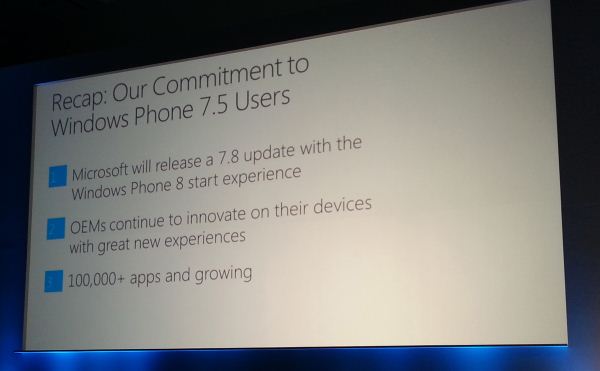


_575px.jpg)
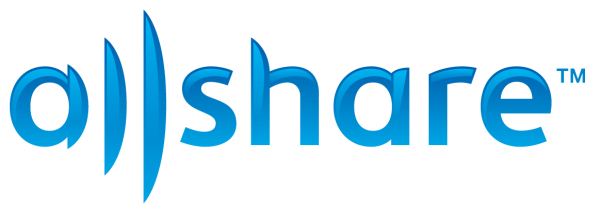
_575px.jpg)
_575px.jpg)

_575px.jpg)

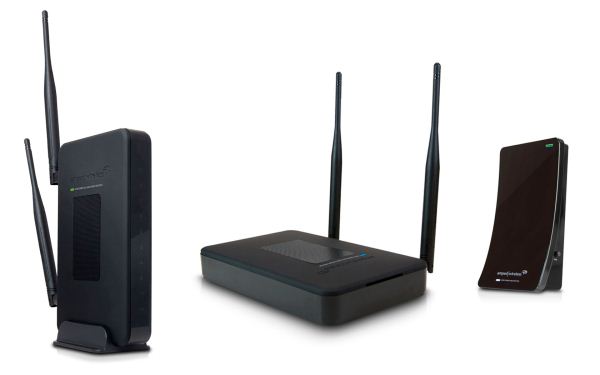
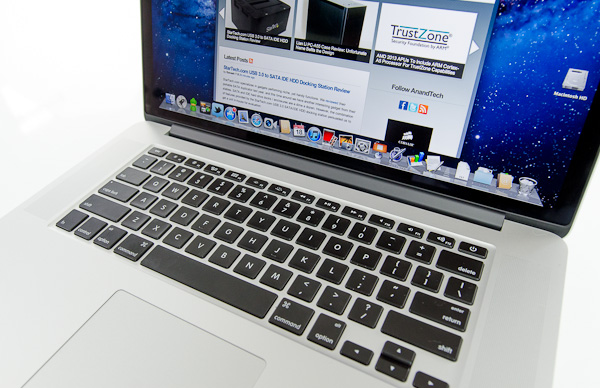
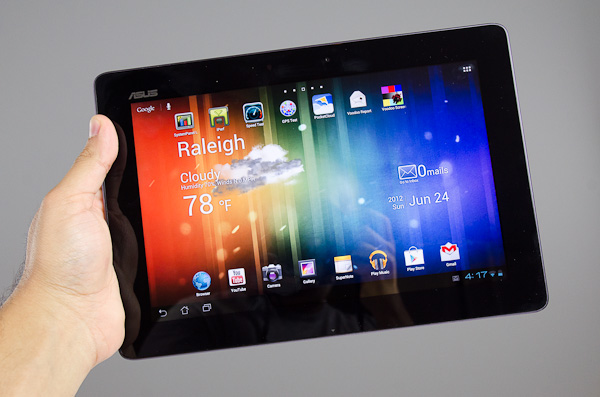
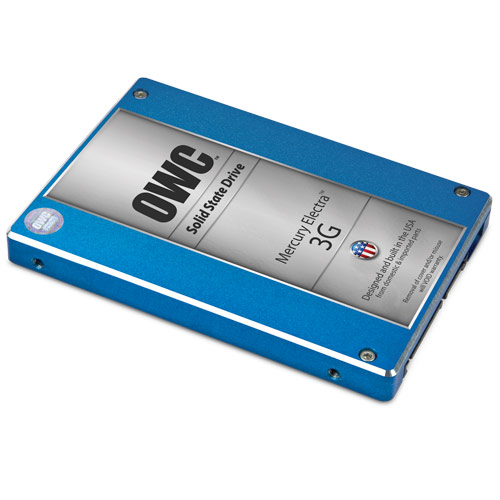
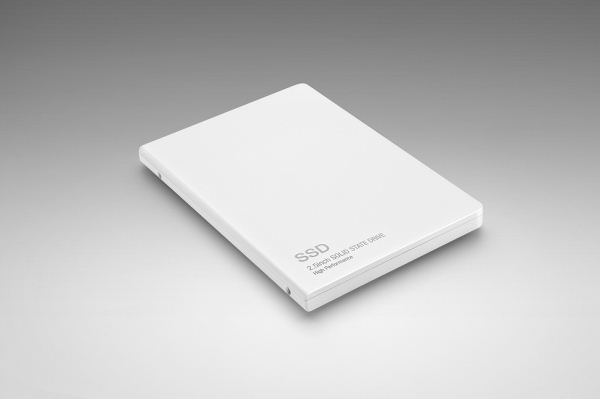
















Bookmarks